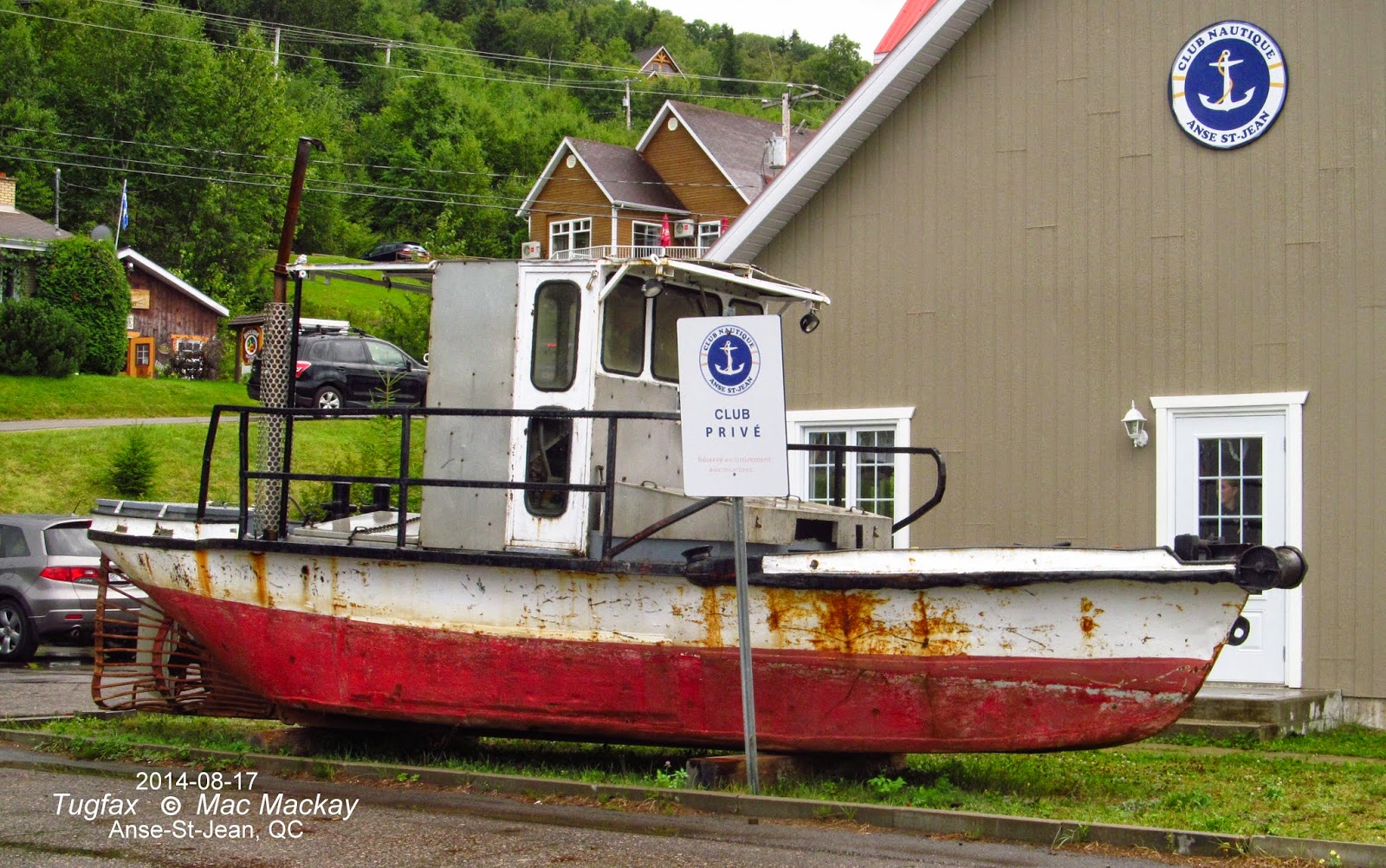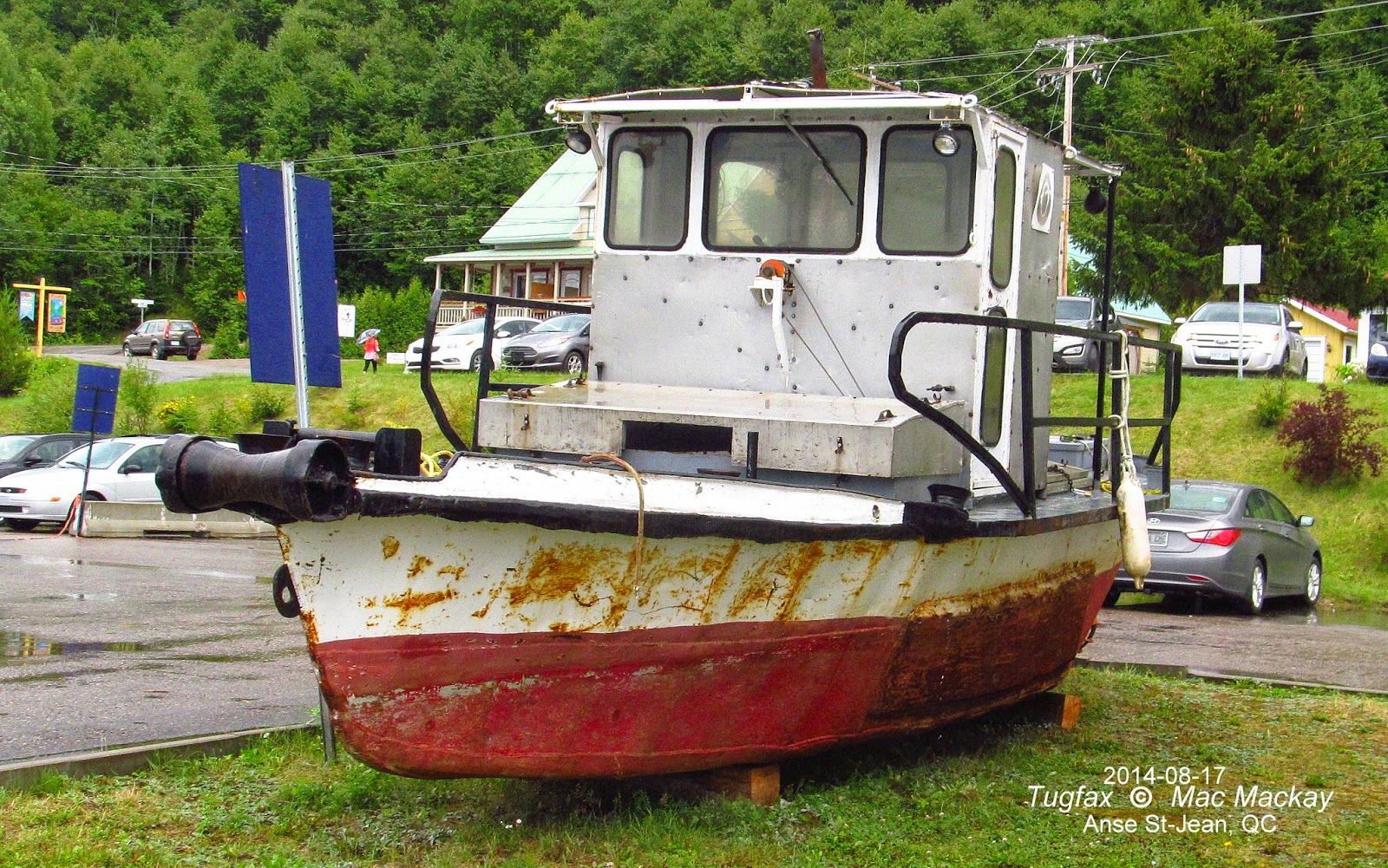From Mac Mackay's excellent TUGFAX blog about Halifax vessels 2014-08-17
source: http://tugfaxblogspotcom.blogspot.ca/2014/09/quebec-report-1-russel-warping-tug.html
 Quebec Report -1, Russel warping tug. While in Quebec this summer I was fortunate enough to spot a typical Russel warping tug. Russel Brothers was founded in Fort Frances in 1907. They initially built tugs in wood, and moved to Owen Sound in 1937. The company expanded with diesel engine sales and service centres under the Russel Hipwell name. Using the trade name Steelcraft, Russel also built small ships in its later years, but was closed in 1974.
Quebec Report -1, Russel warping tug. While in Quebec this summer I was fortunate enough to spot a typical Russel warping tug. Russel Brothers was founded in Fort Frances in 1907. They initially built tugs in wood, and moved to Owen Sound in 1937. The company expanded with diesel engine sales and service centres under the Russel Hipwell name. Using the trade name Steelcraft, Russel also built small ships in its later years, but was closed in 1974.
Its most popular product was the 37'-6" long warping tug, used in the woods operations of most of the pulp and paper companies. The boats were fitted with a large bow roller, grapple anchor and warping machine (winch). Setting out the anchor, the tug then connected to a log boom and winched itself up to the anchor. The gearing of the warping winch allowed them to pull far more than they could on their own engine and prop. They were also able to warp themselves over land, portaging between lakes, often on winter ice or snow roads. Using their heavily guarded props they working in amongst wood booms pushing and pulling.
Built to robust standards many outlived the woods operations of their owners, or became surplus as modern machinery was introduced.
Groupe Océan of Quebec City scooped up a number of these boats and put them to work in their marine construction operations, and some were converted to pleasure craft. Others have been preserved as displays at museums and interpretation centres. Since they were easily transported by train or truck, they sometimes moved around as the owners operations required. Others were abandoned in remote country since the cost of relocating them exceeded their value.

A preserved warping tug is the unnamed vessel I saw in Anse-St-Jean, QC, in August. The major pulpwood company in the area was Consolidated Paper, and this is likely one of their former units. Its cabin has been replaced. but the hull, and bow roller are still in the original configuration. It also appears to have been in service until fairly recently, and may still be operable. A slot in the housing over the warping winch aligns with the bow roller, and the protective cage around the prop and rudder is till in place.

|